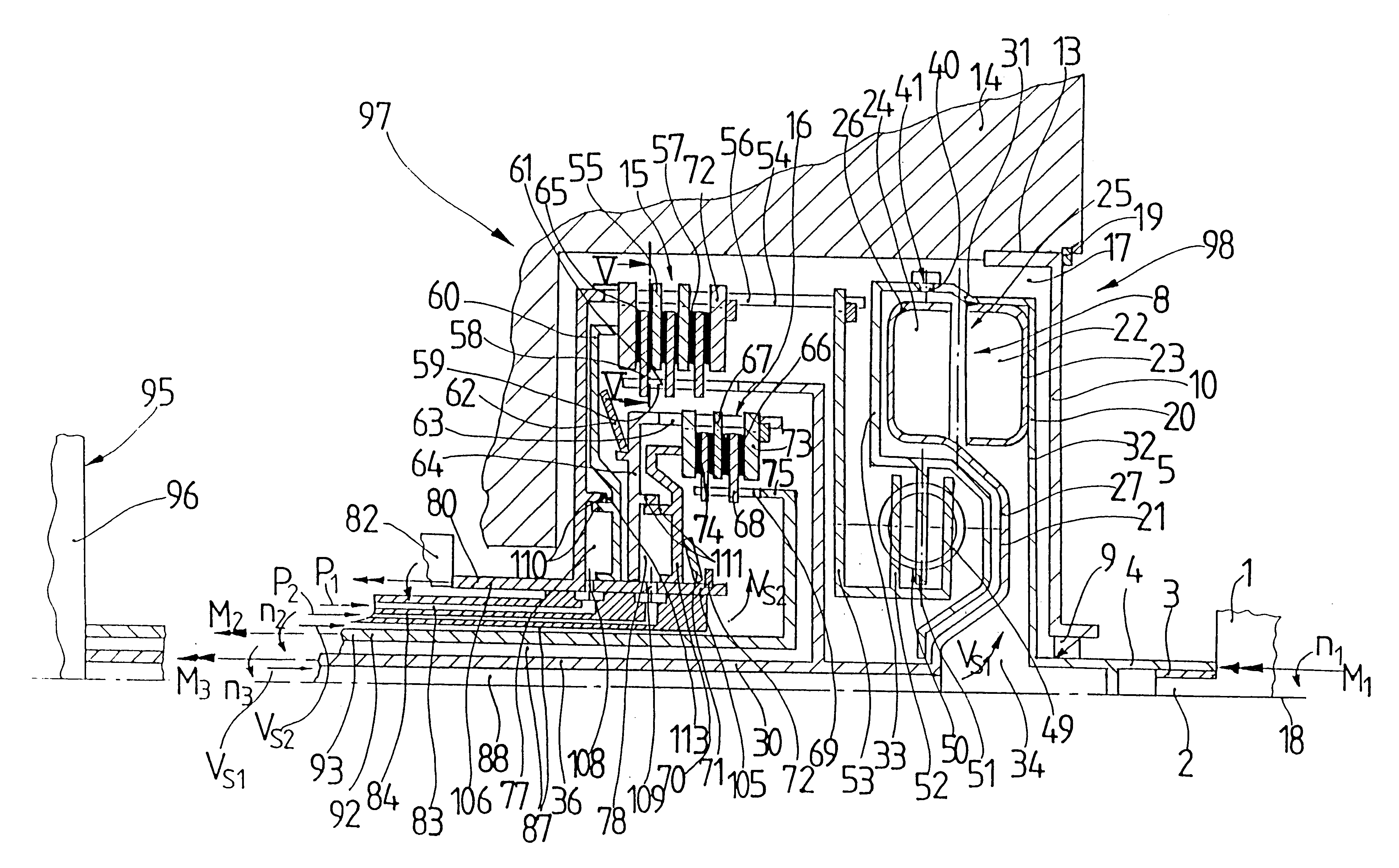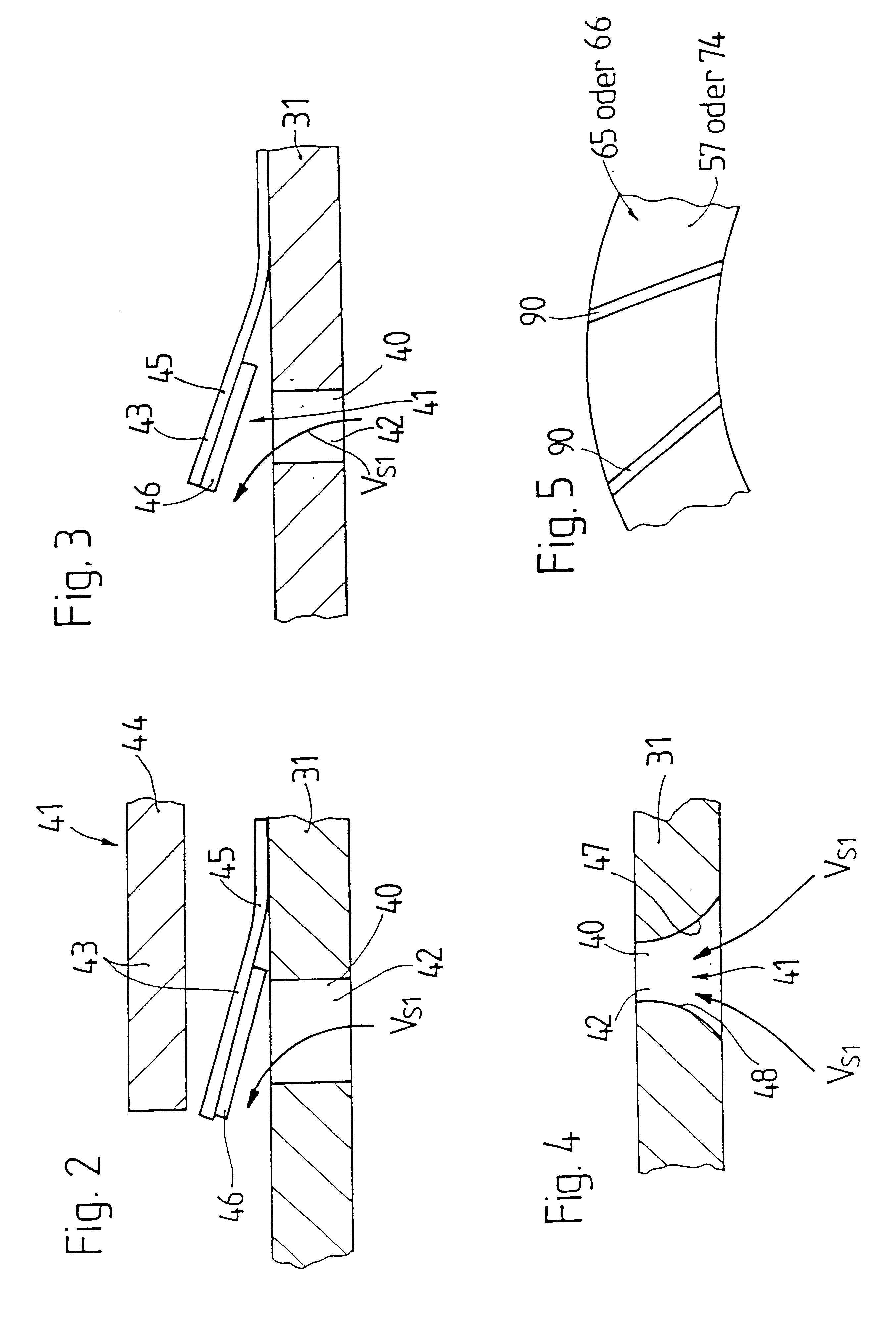Clutch device with a hydrodynamic clutch and at least two friction clutches
a technology of hydrodynamic clutch and friction clutch, which is applied in the direction of rotary clutches, fluid couplings, couplings, etc., can solve the problems of increased wear of friction clutches, and heat must be carried away
- Summary
- Abstract
- Description
- Claims
- Application Information
AI Technical Summary
Benefits of technology
Problems solved by technology
Method used
Image
Examples
Embodiment Construction
FIG. 1 shows a drive 1 which can be formed by an internal combustion engine of a motor vehicle. This drive 1 is provided with a crankshaft 2 which is connected via a toothing 3 with a hollow shaft 4 of an enclosure 5 for a hydrodynamic clutch 8 so as to be fixed with respect to rotation relative to it. The hollow shaft 4 has a seal 9 which is enclosed in turn by a cover 10 of a housing 14. The cover 10 is recessed into a depression 13 of the housing 14 in the radial outer area and is secured in the axial direction by the axial boundary of the depression 13 at one end and by a counter-holder 19 at the other end. The cover 10 defines a space 17 at its side facing the drive 1 which serves to receive the hydrodynamic clutch 8, mentioned above, and two friction clutches 15, 16. Together with the friction clutches 15, 16, the hydrodynamic clutch 8 forms a clutch device 97 which cooperates with the drive 1 and a shift transmission 95 as the drivetrain 98 of a motor vehicle. The hydrodynami...
PUM
 Login to View More
Login to View More Abstract
Description
Claims
Application Information
 Login to View More
Login to View More - R&D
- Intellectual Property
- Life Sciences
- Materials
- Tech Scout
- Unparalleled Data Quality
- Higher Quality Content
- 60% Fewer Hallucinations
Browse by: Latest US Patents, China's latest patents, Technical Efficacy Thesaurus, Application Domain, Technology Topic, Popular Technical Reports.
© 2025 PatSnap. All rights reserved.Legal|Privacy policy|Modern Slavery Act Transparency Statement|Sitemap|About US| Contact US: help@patsnap.com



